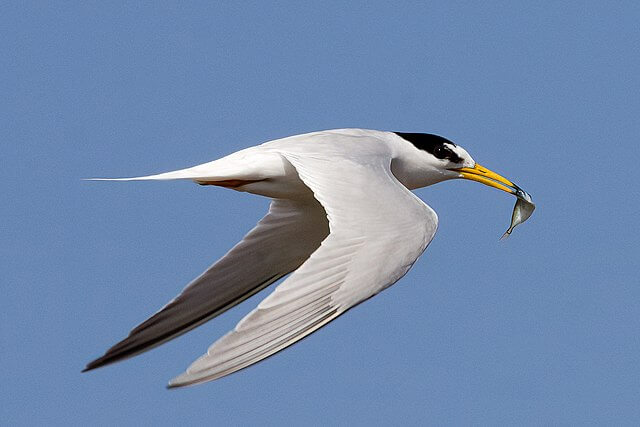
A successful three-year project aimed at creating and restoring breeding and feeding sites for endangered birds has seen positive outcomes, with eight pairs of little terns nesting on islands at RSPB Minsmere in Suffolk for the first time since 2019.
Although the young terns did not survive, there is optimism that they will return and thrive in future years. The reserve, near Saxmundham, has witnessed nesting by various bird species, including 27 avocet chicks successfully fledging.
RSPB Minsmere’s “Scrape,” consisting of shallow lagoons with scattered islands, provides essential feeding areas for breeding wading birds and seabirds, supporting diverse invertebrates.
Originally created in the 1960s with avocet conservation in mind, the site required significant rejuvenation to enhance its benefits to coastal birds after years of heavy use.
Part of the LIFE on the Edge program, the Minsmere Scrape enhancement project began in the winter of 2021. The initiative involved creating shingle-covered islands to encourage ground-nesting birds like the little tern, implementing new water level controls for adaptable management, particularly in drought or flood conditions.
Mr Forster said: “We had eight pairs [of little terns] nesting on one of the newly re-profiled islands, which was incredibly exciting.
“They didn’t nest the year before anywhere on the site, so that was good. And we are hopeful that they will reappear in future years and do really well.”
He said avocets had also had “a pretty successful year”.
“This year, 27 chicks fledged, which is bang on target for us.
“This is part of the whole range of east coast wetlands which are really important for birds. We have applied to have them designated as a World Heritage Site because they are an important part of what is known as the east Atlantic flyway, where birds migrate north and south in huge numbers.”
Wez Smith, senior project manager for LIFE on the Edge, said: “After years of planning… it’s great to see the iconic Minsmere Scrape rejuvenated for new generations of birds and people to enjoy.
“The enhancements at Minsmere will secure this thriving coastal wetland for the seabirds, waders and a host of wildlife for the future, all visible for people to see, hear and be inspired by.”
The project’s success is significant for the RSPB and National Trust, contributing to their joint efforts to improve coastal nature sites in England. Funding from LIFE on the Edge and the National Grid Landscape Enhancement Initiative has played a crucial role in supporting and realising the positive outcomes of this conservation endeavour.
The restoration work underscores the importance of ongoing efforts to create and maintain habitats that benefit endangered bird species and contribute to the overall health of coastal ecosystems.
——————————————————————————
At Natural World Fund, we are passionate about stopping the decline in our wildlife.
The decline in our wildlife is shocking and frightening. Without much more support, many of the animals we know and love will continue in their decline towards extinction.
When you help to restore a patch of degraded land through rewilding to forests, meadows, or wetlands, you have a massive impact on the biodiversity at a local level. You give animals a home and food that they otherwise would not have had, and it has a positive snowball effect on the food chain.
We are convinced that this is much better for the UK than growing lots of fast-growing coniferous trees, solely to remove carbon, that don’t actually help our animals to thrive.
This is why we stand for restoring nature in the UK through responsible rewilding. For us, it is the right thing to do. Let’s do what’s right for nature!
Donate today at https://naturalworldfund.com/ and join in the solution!

